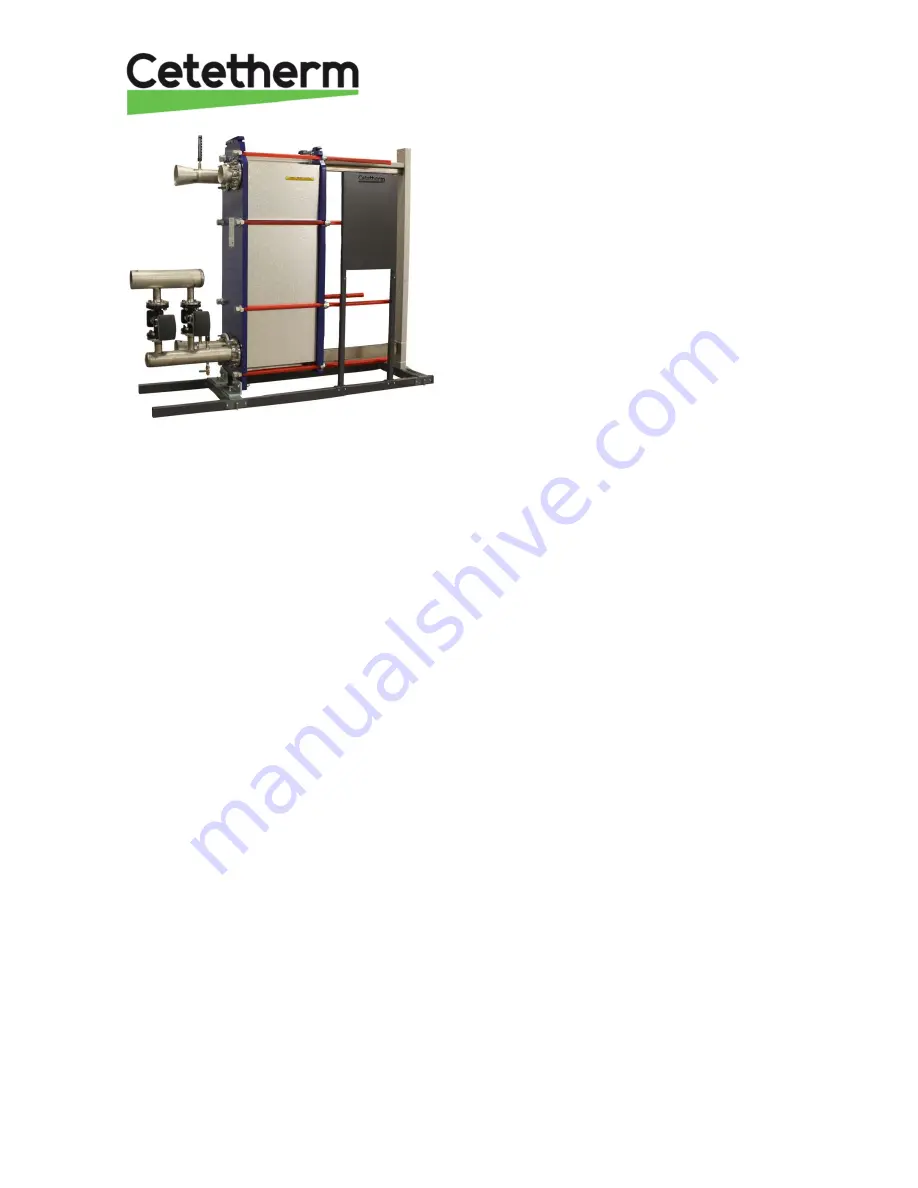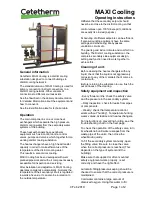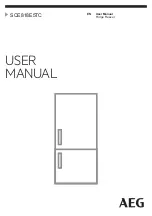
MAXI Cooling
Operating instructions
4 Feb 2019
Page 1 of 2
General information
Cetetherm MAXI Cooling is a district cooling
substation designed to connect buildings to
district cooling networks.
The standard version of MAXI Cooling is used for
primary connection (indirect connection) to a
district cooling network. Other variants of
connections to different sources exists.
See the flowchart in the delivery documentation
for detailed information about the equipment and
how to connect it.
See the identification plate for technical data.
Operation
The main component is one or more heat
exchangers which separate the high pressure
district cooling water from the secondary water
systems of the building.
These heat exchangers have peripheral
equipment such as a control centre, control
valves, pumps and valves, which together form a
working district cooling substation.
The heat exchangers have a high heat transfer
capacity in order to make efficient use of the
temperature of the district cooling water.
This results in economical cooling.
MAXI Cooling has been developed with well-
planned pipework and with all components easily
accessible for inspection and servicing.
After installation and adjustment, MAXI Cooling
operates completely automatically. Normally the
temperature of the secondary circuit is regulated
towards a fix value. It can also be in relation to
the outside temperature.
OBServe that the secondary setpoint should
never be so close to the district cooling so that
control valves open 100% (Except if conditions
are exactly like in design specs).
Scheduling of different setpoints can be efficient,
if also surrounding equipment have the same
settings and scheduling, like bypasses,
ventilation circuits etc.
The goal is good indoor climate and comfort in a
building. The District cooling subs the
complete secondary side equipment design,
setting and function need to work together to
achieve this.
Cleaning of unit:
Before cleaning the heat exchangers with any
liquid, check that the liquid is not aggressively
corrosive to any of the materials that it comes in
contact with.
-Before returning the substation to use, flush the
out all traces of the cleaning.
Safety equipment and inspection
- Every three months: check the safety valve
and the pressure in the secondary system.
– Daily inspection: check for leaks from pipes
or components.
– Weekly: check that temperature control
works without “hunting”. Temperature hunting
wears valves, actuators and heat exchangers.
For instructions on preventing hunting, see the
troubleshooting chart on the next page.
To check the operation of the safety valve, turn
its wheel/knob until water escapes from the
waste pipe of the valve, then close the
wheel/knob quickly.
To fill the secondary system manually, open
the filling valve. Be sure to close the valve
when the correct pressure is reached. (This
depends on the type of system and the
building.)
Make sure that supplied or after- mounted
safety equipment works properly, is set
correctly and have the right effect.
Automatic filling/pressure-keeping should be
checked to ensure that the correct pressure is
maintained.
Cold water contains a large amount of
dissolved oxygen. Using this water to fill




















